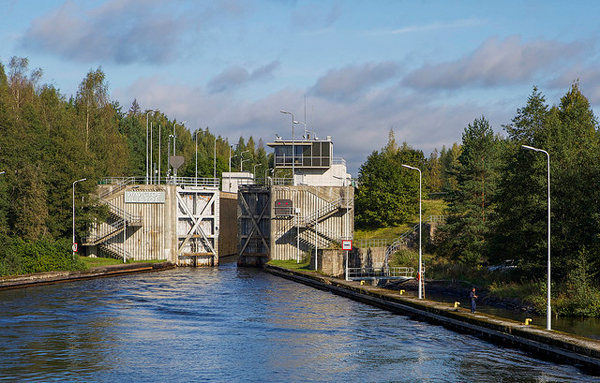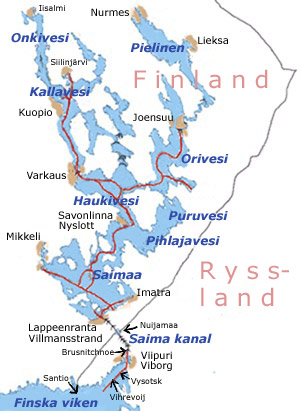
Moscow Raises Two Territorial Issues After Helsinki Requests to Join NATO
Publication: Eurasia Daily Monitor Volume: 19 Issue: 79
By:

The Russian government has a long tradition of raising territorial disputes against any neighboring country that seeks to join the North Atlantic Treaty Organization (NATO) because Moscow hopes that the existence of such purported disputes will slow down or even stop the process of these aspirants’ accession to the transatlantic alliance. To date, that strategy has not succeeded in dissuading any countries from pursuing membership in the alliance nor in outright stopping NATO from enlarging; but it has led to several instances of delays in the accession process. Consequently, it is no surprise that Russia has now broached two territorial issues in the case of Finland, which applied to join NATO earlier this month. But this time around, there is a crucial difference in the Russian approach: Moscow has shied away from reopening the broader question of borders between the two countries because it believes the present status quo favors Russia. Instead, it is citing two other “territorial” issues that are smaller in scope than wholesale border changes yet potentially serious as obstacles to the Nordic state’s accession process.
Last week (May 23), Vladimir Chizov, Russia’s permanent representative to the European Union, said on Moscow’s Rossiya-24 radio station that Finland’s application to join NATO raises two issues of concern in Moscow. The first involves the status of the Åland Islands, “which, by international agreement, have a demilitarized status.” And the second is the future status of the Saimaa Canal, which links the Finnish lakes to the Gulf of Finland but passes through Russian territory. Moscow has leased Helsinki land along this canal for 50 years, but what Russia will do if Finland becomes a member of the North Atlantic Alliance remains an open question. Moscow opposes any change in the special status of the islands, although the West may insist on it given that both Finland and Sweden are likely to be admitted to NATO. In turn, Russia may want changes in the accords governing the Saimaa Canal. “We shall have to see,” the ambassador said (RIA Novosti, May 23). These were no off-the-cuff remarks but rather a clear expression of Kremlin policy, as reflected in the fact that numerous Russian outlets have repeated and expanded on Chizov’s words; and NATO experts have taken note as well (Vglyad, May 23, 27; Kremll.info, May 31).
The Åland Islands archipelago, although small—only 1,580 square kilometers, with just over 30,000 residents—has an outsized importance in regional and even international affairs. Its current status represents one of the few great success stories of the former League of Nations, which ended a conflict between Finland and Sweden in 1920. The respective international treaty, signed in October 1921, declares that the islands remain within Finnish sovereignty but enjoy far-ranging autonomy, to the point of having Swedish as the only official language and releasing their male residents from the obligation of serving in the Finnish military. That compromise has more or less held over the past century and is often held up as an example of how territorial disputes between countries can be resolved (Thomas D. Grant, The Recognition of States: Law and Practice in Debate and Evolution, Westport, CT, 1999, pp. 129–130; Krym.Realii, January 5, 2017). Initially, most Åland Islanders viewed their territory as being Swedish but under Finnish occupation; however, in recent decades, most have begun to view it instead as Finnish territory with a Swedish culture—a rare success story in such disputes. Finland reaffirmed the 1920 League ruling on the territory in 1951 and 1991, as did the European Union following a 1994 vote both in Finland and the Åland Islands to join that group of states. It, thus, has been considered a settled issue internationally.

From Russia’s perspective, the most important aspect of the 1921 Åland Convention and subsequent practice is that the Åland Islands are demilitarized. That has prevented ethnic tensions there from growing into international ones between Sweden and Finland, a real possibility earlier but one that seems remote now. What is an open question is whether NATO will accept the century-old League demilitarization provisions or instead recognize that, because both Sweden and Finland are members of the Alliance, all of their territories should be available for use by allied forces if not on a constant basis than in the event of a crisis. That is what Moscow is concerned about and will undoubtedly seek to extract a commitment from Helsinki, Stockholm and Brussels on in the coming weeks.
If the Åland Islands issue is familiar to those who closely follow international relations in northern Europe, the case of the Saimaa Canal is not—even though it has long been critically important for the economic development of both Finland and northwestern Russia. Opened in 1856 and expanded in the 1960s, the 814-kilometer man-made waterway connects 120 lakes within Finland to the Gulf of Finland and makes it easier for Finnish firms to export goods to the world. But because of changes in the border between Finland and the Soviet Union following the Winter War in 1939–1940, the channel passes through Russian territory to this day. Between 1940 and the end of the 1950s, there was, thus, no traffic between the two countries along it. But in 1963, Moscow, desirous of integrating Finland into the Eastern Bloc, agreed to give Helsinki a 50-year lease on the part of the canal passing through Soviet territory. That accord was replaced by a second 50-year agreement in 2010, which is projected to last until 2063. It gives Finland jurisdiction over rules governing passage but maintains Russian law otherwise, except for a provision that lifts the requirement for those ships to have Russian visas (Kremlin.ru), November 20, 2011).


As Ambassador Chizov’s remarks show, however, Moscow is hardly likely to be willing to maintain this arrangement if Finland becomes a NATO country. At a minimum, the Russian side will impose visa requirements; but the threat that it might, in fact, close the portion of the canal passing through Russian territory to Finnish shipping is a real one and could have serious consequences for the Finnish economy. As a result, these issues may soon garner far more international attention than ever before.



